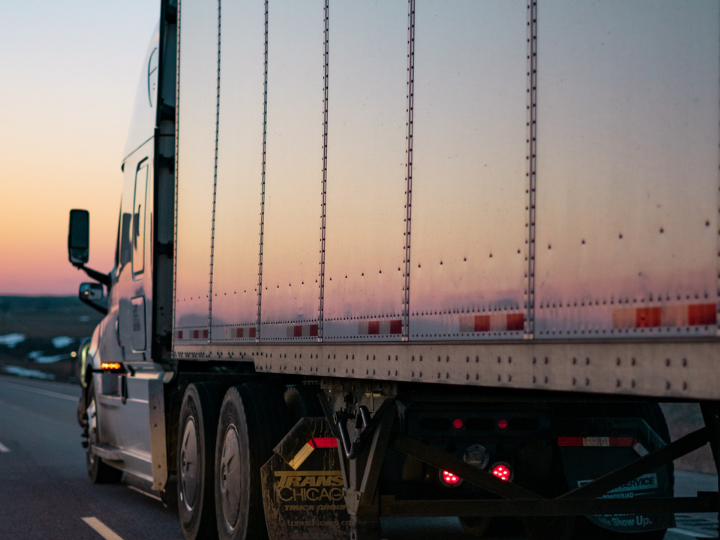by Joachim Rosenberg*
The demands for more sustainable transport set by COP26, the European Green Deal and the Paris Agreement amongst others are still thriving, but real deployment of carbon reduction measures need to accelerate considerably if we are to meet the declared ambitions reiterated in the third IPCC report published in April 2022.
When it comes to electrifying road transport, on the one hand it starts with electric vehicles (EVs) being available. But as the penetration of EVs increase, the need to secure the required infrastructure to support widescale uptake is intensifying. Or to put it simply, we have a “chicken and egg dilemma”; it does not matter how many great, zero emission vehicles we can offer if there is no charging infrastructure in place along the transport operator’s routes.
And it also works the other way around; there will likely not be sufficient investments in charging infrastructure as long as there are not enough EVs on the road. Therefore, we need to be flexible and to leverage infrastructure solutions for both battery electric vehicles (BEVs) and fuel cell electric vehicles (FCEVs) in order to provide climate neutral options to society, adapted to each unique customer’s needs.
Involving everyone in the electrification journey
Partnership holds the power to drive this forward. Creating the conditions for mass market rollout of both batteries and fuel cells requires collaboration between partners and stakeholders across the eco-system, including vehicle manufacturers and energy suppliers, as well as policy makers and regulators who have a vital role to play in encouraging a policy environment that supports each phase of development and roll-out.
This is no small undertaking and requires a new kind of profound and comprehensive collaboration we have yet to experience. Each main player across the supply chain needs to be on board if we are to make this work. And it needs to happen now.

Volvo Group, for its part, has taken the initiative to fund a pioneering joint venture with a number of industry competitors to set up and install a high performing charging network of at least 1,700 charging points across Europe – the largest investment of its kind for the region yet – which will go a long way to meeting carbon neutral transportation for the continent by 2050. North America is also showing similar levels of investment in its charging infrastructure. The world is standing up to take notice, let’s not lose this opportunity.
However, we cannot put all our eggs in any one technology basket since time is short, customers are different and market conditions vary. Strong charging networks for batteries, but also refuelling networks for hydrogen fuel cells, are absolutely vital to accommodate the different needs required for different forms of transport. This is crucial as penetration will happen application-by-application, region-by-region and technology-by-technology where the transport operator (as always) will decide what is best for his or her business at any given point in time. A menu of possibilities will most likely be required to drive the transformational shift, noting the significant gap we currently have in green energy production, distribution and, to some extent, cost.
Circular, not linear
To make these new technologies a reality in the most sustainable way possible it is vital we consider a circular economy, where we create a thriving society that does not rely on the depletion of our planet’s natural resources. No matter what industry you are in today, the shift from a linear business model, where we make new products and discard them at the end of life, towards a circular one which embraces remanufacturing, refurbishing, repurposing and recycling, is absolutely inevitable if we want to survive tomorrow. And this certainly applies to transport.
Besides being the right thing to do, a circular approach also gives us the possibility to deepen and prolong the relationship with our customers and suppliers and to secure their future resource needs. At Volvo Group for example, we work with more than 5,000 suppliers and the circular approach requires each and every one of us to act to improve resource efficiency. While not an easy task, it is essential and by collaborating across the supply chain and beyond we will make it happen.
Digitalize for circularity
The recycling of existing batteries, as part of this circular economy, is particularly crucial for our green transformation. The less raw material we extract, the better it is for the planet from both a resource and a sustainability perspective. Therefore, to minimize the environmental impact of electrified products, batteries must be designed for circularity with a second or third life and recycling in mind. By refurbishing or remanufacturing the batteries, where selected cells or modules are replaced, it is possible to extend their potential and create more winners; planet, people and profit pools alike.
To succeed in this feat and create a viable battery life beyond first use, it is vital that we optimize battery data. In today’s world, data is the new oil and simply invaluable when it comes to deciding the most optimal second-life usage. By continuously learning about the characteristics of every single ageing battery, we can build a knowledge bank for optimizing battery use, not only during the battery’s first and second life, but also over its entire life cycle. In this way, digitalization has become key to helping us explore the full potential of batteries – and in doing so ensure a much higher quality power source at every stage of its life.
Our climate emergency dictates that net-zero transport is no longer a “nice to have”, it’s “essential to have” if we are to ensure a sustainable future for our children. Only by adopting a circular approach can we support our ultimate goal of net-zero transport in the coming years, one that is enhanced through partnerships with every player on the electrification journey, at every stage of our sustainable transport’s development.
Nothing truly important comes easy. Nonetheless, this transformation is vital, urgent and worth fighting for on an everyday basis. Partnership is the new leadership. Let’s jointly shift from individual success to collective significance.
*Executive Vice-President, Volvo Group; President, Volvo Energy
**first published in: www.weforum.org




 By: N. Peter Kramer
By: N. Peter Kramer
